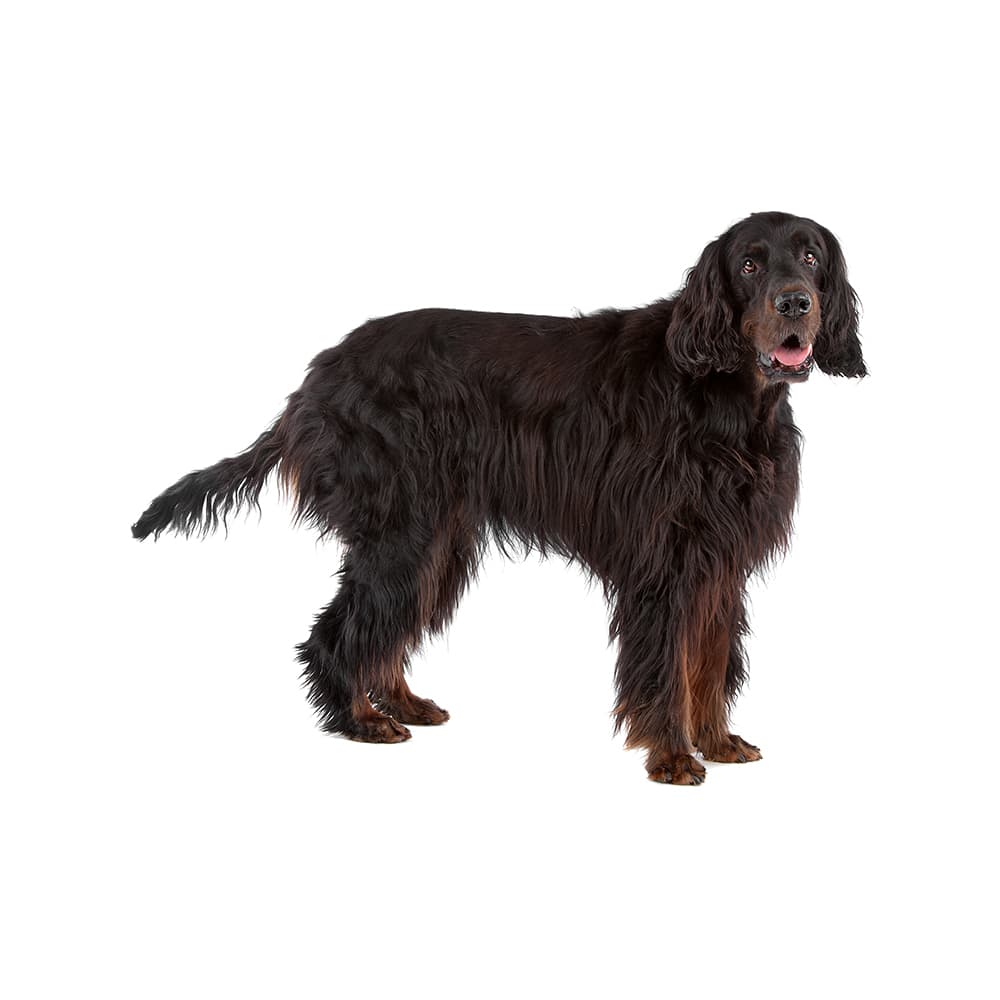Discover your dog's connection to this breed and 200+ others


Discover your dog's connection to this breed and 200+ others



The Gordon Setter breed traces its roots back to Scotland in the early 17th century and was developed as a bird dog to work in the harsh Scottish Highlands. The breed was initially known as the "black and tan setting dog". In the 19th century, the breed gained popularity under the 4th Duke of Gordon, Alexander Gordon, and was subsequently named after him. Gordon Setters were brought to the United States in the 1840s and were recognized by the American Kennel Club in 1892.
Gordon Setters are susceptible to bloat, also known as gastric dilation volvulus (GDV). This is a life-threatening condition that can come on suddenly, so it’s important to know the warning signs and get an affected dog immediate veterinary care. They can suffer from eye disorders including dry eye, progressive retinal atrophy, and cataracts. They may also experience inflammation of the face and lymph nodes as puppies, a condition called juvenile cellulitis. Other conditions that may affect the Gordon Setter seizures, cancer, thyroid issues, cerebellar ataxia, kidney and heart disease, and orthopedic issues such as elbow and hip dysplasia.
Gordon Setters are known for their loyal, intelligent, and sometimes stubborn nature. They are usually good with children and get along well with other dogs if properly socialized from a young age. They are energetic dogs, requiring regular exercise and mental stimulation.
While Gordon Setters can be trained for obedience, they are known to have a stubborn streak and can be independent thinkers. This makes consistent, positive reinforcement training essential from a young age. They are sensitive dogs and respond well to gentle, consistent training methods.
A canine genetic lineage is a group of individuals or entire breeds that descended from common ancestors predating modern breed formation. Often these lineages are associated with a ‘type’ of dog with a unique historical working role and associated behaviors (e.g., herding, scent hunting, etc.).
The Pointer-Spaniel lineage encompasses both pointer and spaniel breeds. They were both bred for their specialized hunting abilities in Europe. Pointers locate game and freeze in a stance, called “pointing”, to indicate to their hunter that birds are close by. Spaniels were bred to find game in underbrush and retrieve it. Both pointer and spaniel breeds were bred to enhance their strong senses, trainability, and endurance as these are advantageous in a hunting partner. Spaniels and pointers are known for their strong work ethic, ability to work closely with humans and agility. These dogs’ ability to work closely with their hunters makes them an asset during a hunt because they follow direction well and know how their hunters want them to proceed.
Example breeds with ancestry from this lineage include English Cocker Spaniel, Irish Red Setter, and German Shorthaired Pointer.
Gordon Setters are among the largest of the setter breeds.
They have an excellent sense of smell, second only to the Bloodhound.
Their coat color, black with tan markings, became standardized only in the late 19th century.
The Gordon Castle Setters, bred by the Duke of Gordon, were originally tri-color (black, tan, and white). The white was later bred out of the breed.
They are the only Scottish setter breed recognized by the American Kennel Club.
https://www.akc.org/dog-breeds/gordon-setter/
https://pets.webmd.com/dogs/what-to-know-gordon-setters#091e9c5e824290cf-3-9 https://ofa.org/chic-programs/browse-by-breed/?breed=GSE https://pubmed.ncbi.nlm.nih.gov/24516392/ https://www.fci.be/Nomenclature/Standards/006g07-en.pdf
https://www.ukcdogs.com/gordon-setter
Recommended by top vets with decades of experience
21 breeds
64 genetic health markers
50 genetic trait markers
